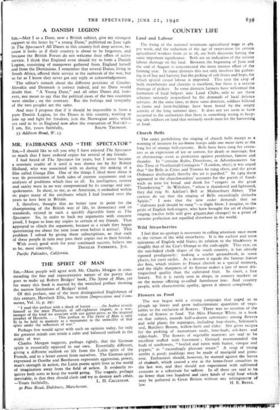Flowers as Food
The war began with a strong campaign that urged us to plough up lawns and grow indiscriminate quantities of vege- tables to the exclusion of flowers. There was no mention of the value of flowers as food. Yet Miss Florence White, in a book on that subject, records half-a-dozen substitutes among flowers and wild plants for asparagus, including hop-shoots, Solomon's seal, Butchers Broom, willow-herb and elder. She gives recipes for the pickling of nasturtium seeds, lime-buds, ash-keys and elder-buds. The flowers of vegetable marrows are said to be excellent stuffed with forcemeat ; Gerrard recommended the buds of sunflowers, " boyled and eaten with butter, vinegar and pepper," as " exceedingly pleasant meate." A soup of young nettles is good; puddings may be made of marigold and prim- rose. Enthusiasts should, however, be warned against the leaves of rhubarb, which caused a rise in the home-front casualties in the last war, and they should not experiment with cultivated crocuses as a substitute for -saffron. In all there are said to be no fewer than two hundred and sixty -kinds of wild food which may be gathered in Great Britain without any infringement of






























 Previous page
Previous page